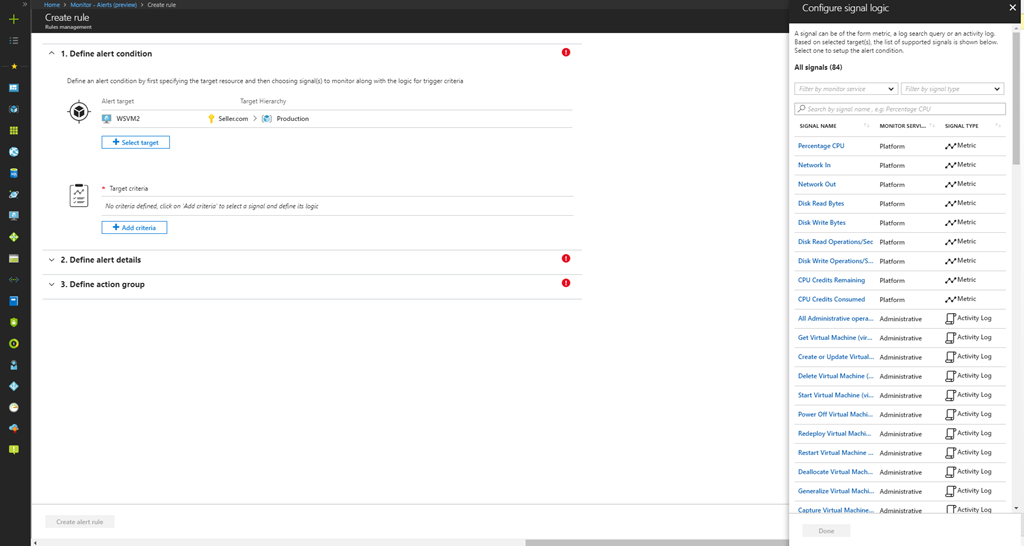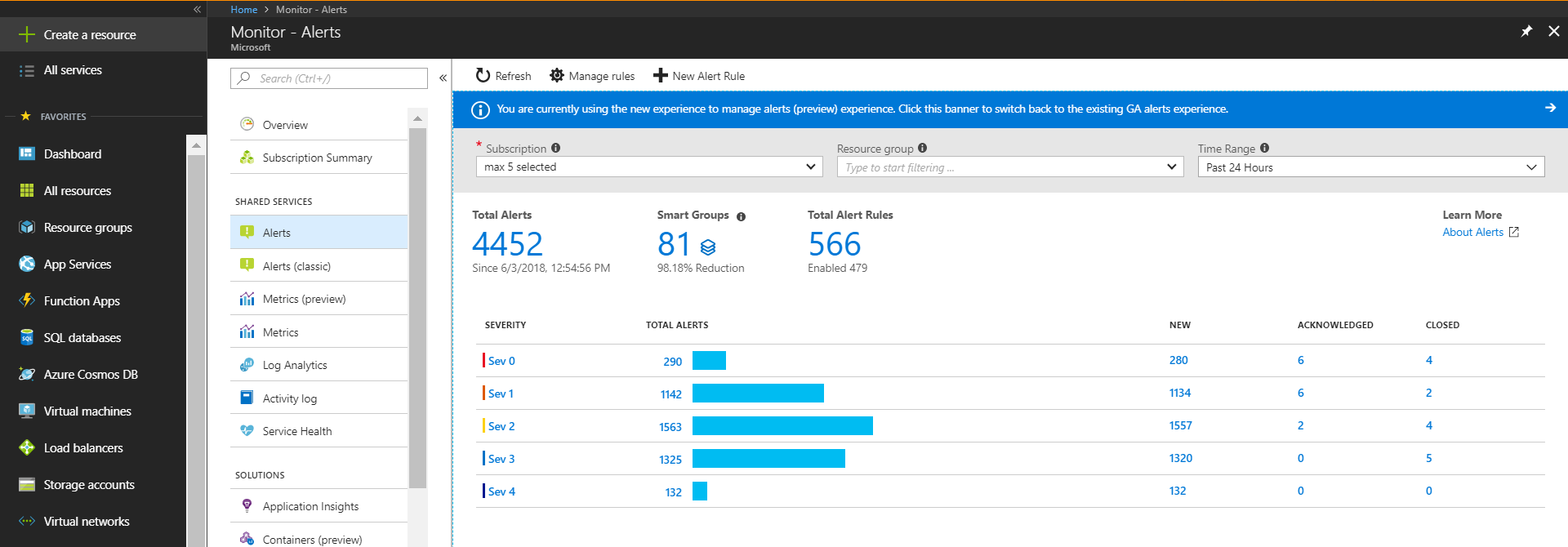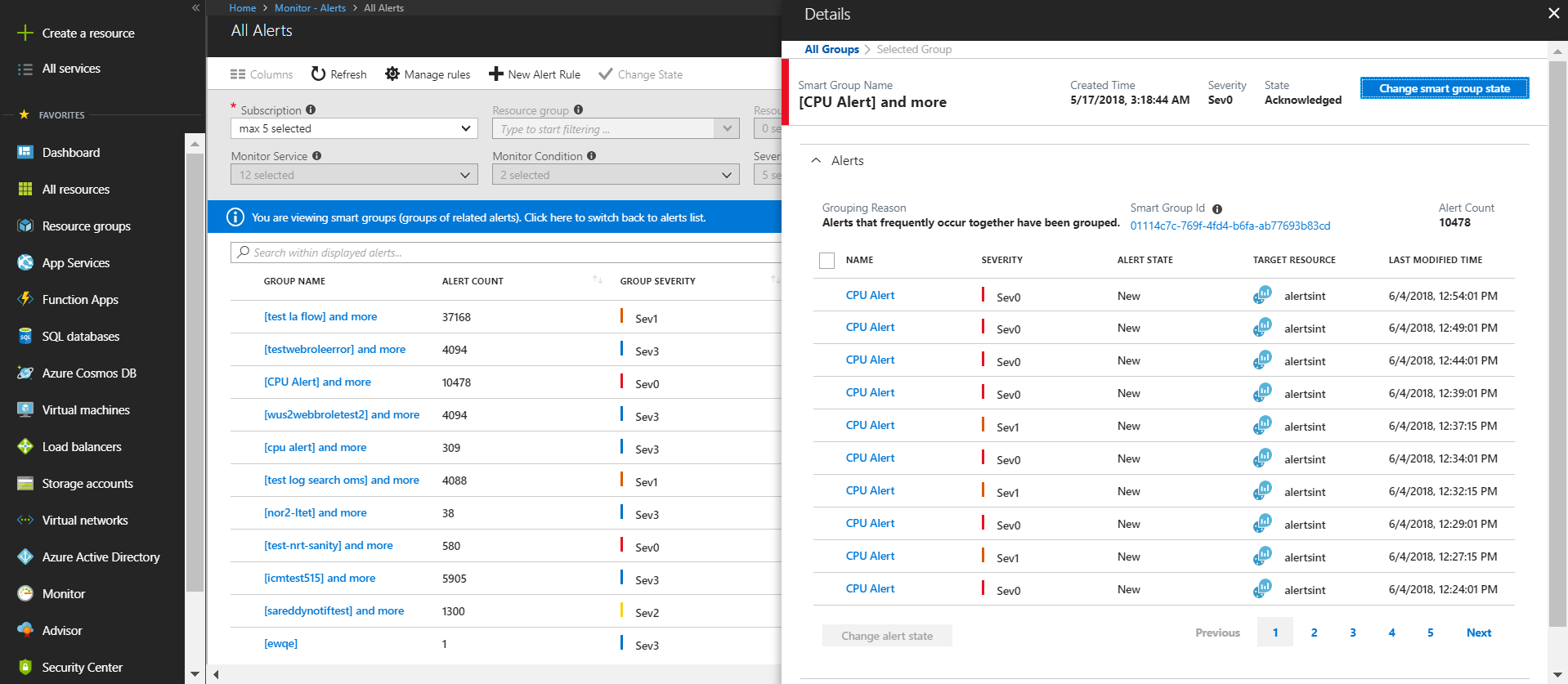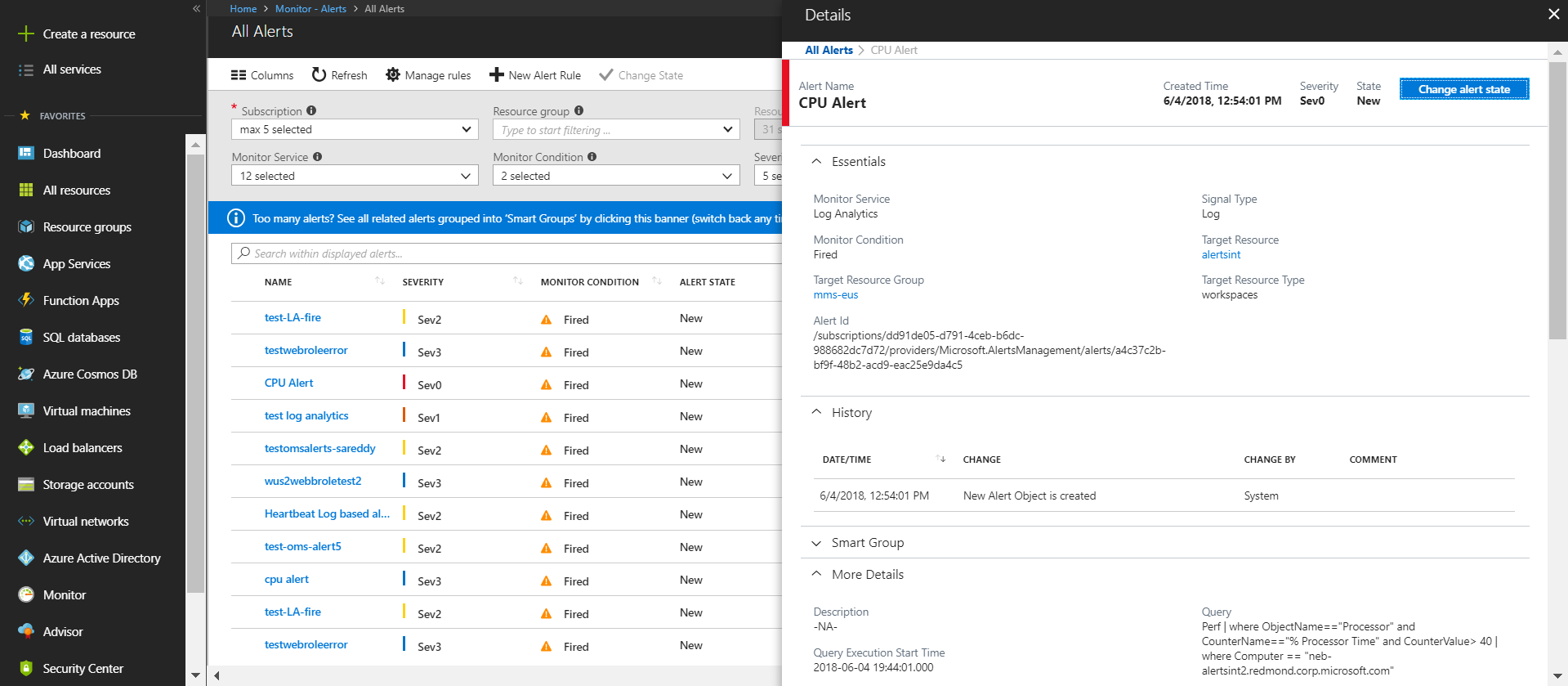Taking into consideration consumer’s ease and satisfaction, Microsoft announced the general availability of the next generation of alerts in Azure.
On the day of announcement, the Principal PM manager of AIM India said: “With the release of the next generation alerts, we are providing a new consolidated alerts experience and offering a new alerts platform that will be faster and leveraged by other Azure services.”
Thus, the statement makes the sole motive of bringing this change crystal-clear.
But what exactly are the changes?
Let’s find out:
FASTER ALERTS
1) Metric Alerts: The new alerts platform is designed to provide low latency metric alerts. It enables users to monitor metric values at a frequency as low as 1 minute with alerts being fired in less than 5 minutes. In addition to this, users can also set alert rules on multi-dimensional metrics opening up the possibility for more complex or precise alert rules.
2) Log Alerts: This enables users in achieving low-latency alerts for certain log types in Log Analytics, including performance counters and heartbeats– which are important for mission-critical infrastructure and applications. To this Microsoft said: ”Coupled with the Log Analytics capability to collect data from Azure and on-premises resources, you can leverage “Metric Alerts for Logs” capability to alert on hybrid environment.”
Together both of the above call for: Unified experience – a single place to manage all alerts in Azure.

3) New alert enumeration experience in API: Offering the possibility to observe alerts in relation to Azure implementations, the users can review alerts across different Azure subscriptions. Moreover, the alert also allows the users to filter and search for alerts by resource groups.

4) Smart Groups: Generated by using automatic algorithms, these alert groups by Azure are meant to reduce alert noise and avoid any overloads for the user. These groups look for similarities and recurring patterns among the alerts that are generated in a monitor service.

5) Alert State Management: This provides the users with the possibility to change the state of an alert and to adapt to the current situation of the issue in a determined environment. There are currently three alert states: new, acknowledged and closed. These states are separate from the monitoring condition that supports two values namely fired and resolved.

After getting you acquainted with the latest alerts, some might develop a confusion as to whether these alerts will actually prove to be helpful?
We have a whole list of benefits that one can reap through it.
- Better notification system
- Unified authoring experience
- Better workflow
- Support for multi-dimensional metrics
- Improved latency
Moreover, Microsoft took users reviews of these new updates, so, let’s see what the users have to say: “The new unified experience dramatically improves our alert management capabilities. As part of our standard client configuration, we deploy and manage a variety of resource monitors to provide comprehensive coverage of a customer environment. These monitors include PaaS Resource Metrics/Logs, Azure Activity Events, and Log Analytics searches. We can now manage all of these monitors and alerts through a single interface and layer standardized action groups across all of them. This new service means we can offer a more consistent approach to our customers while dramatically reducing the management overhead.”
So, make the wisest use of the new alert and bring ease for yourself !






